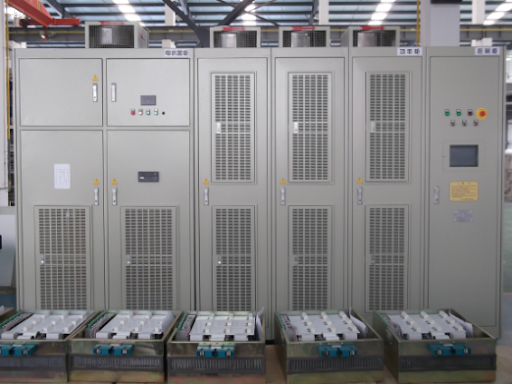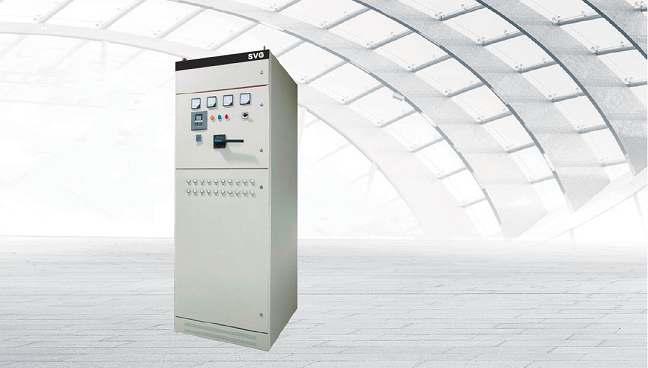
The advantages of SVG and SVC comparison
The basic principle of STATCOM (Static Synchronous Compensator, referred to as SVG) is to use turn-off high-power power electronic devices (such as IGBT) to form a self-commutated bridge circuit, which is connected in parallel to the grid through a reactor to properly adjust the AC side of the bridge circuit The amplitude and phase of the output voltage, or the direct control of its AC side current, can make the circuit absorb or send out reactive current that meets the requirements, and realize the integration of dynamic compensation of inductive reactive power and capacitive reactive power. Dynamically compensates the characteristics of a wide range of fast-changing instantaneous reactive power.

Compared with synchronous camera and SVC device, STATCOM has the following advantages:
1) Using digital control technology, the system has high reliability and basically does not require maintenance, which can save a lot of maintenance costs;
2) The performance in improving the transient stability of the system and damping system oscillations is much better than the traditional synchronous adjustment camera;
3) Flexible control, faster adjustment speed, wide adjustment speed, continuous and rapid adjustment under inductive and capacitive operating conditions, and the response speed can reach milliseconds;
4) Stationary operation, safety and stability, no large-scale rotating equipment like a camera, no wear, no mechanical noise, which will greatly increase the life of the device and improve the environmental impact;
5) The requirement for the capacity of the capacitor is not high, and the large inductance, large capacitance and huge switching mechanism in conventional devices can be omitted, so that the STATCOM is small in size and low in loss;
6) The connection reactance is small. The connection reactance of STATCOM connected to the grid is to filter out higher harmonics in the current, and also to connect the converter to the grid. Therefore, its inductance is much smaller than that of SVC devices such as TCR with the same compensation capacity. Required inductance
7) The output current of STATCOM does not depend on voltage, it is a constant current source and has a wider operating range. The essence of SVC is impedance compensation, and the output current and voltage are in a linear relationship. Therefore, when the system voltage becomes low, STATCOM with the same capacity can provide larger compensation capacity than SVC
8) STATCOM has a faster response speed than SVC, so it is more suitable for suppressing voltage flicker. STATCOM response time is within 10ms, while SVC response time is generally 20-40ms. STATCOM can change from rated capacitive reactive power to rated inductive reactive power (or vice versa) within 1ms. This response speed is fully capable of compensating for impact load;

9) The bridge circuit of STATCOM uses multiple technology, multi-level technology or PWM technology to eliminate the lower harmonics and reduce the higher harmonics such as 7 and 11 to an acceptable level. The SVC itself must generate a certain amount of harmonics. For example, the 5th and 7th characteristic subharmonics of the TCR type are relatively large, accounting for 5% to 8% of the fundamental value; others such as SR, TCT, etc. also produce 3, 5, High-order harmonics of the 7th and 11th order, which bring many difficulties to the filter design of the SVC system;
10) Under fault conditions, STATCOM has better control stability than SVC. SVC uses a large number of capacitor reactors. When the capacity of the external system is comparable to the capacity of the compensation device, the SVC will produce instability. STATCOM is not sensitive to external system operating conditions and structural changes;
11) STATCOM has a smaller footprint and lower cost than an SVC with the same capacity. Because STATCOM uses DC capacitors to store energy, the volume of capacitors can be reduced, and the reactive power can be controlled smoothly without parallel reactors, so the installation size is greatly reduced;
12) STATCOM can provide active power within a certain range to reduce the impact of active power. SVC can only provide reactive power and does not have the function of providing active power.
The basic principle of STATCOM (Static Synchronous Compensator, referred to as SVG) is to use turn-off high-power power electronic devices (such as IGBT) to form a self-commutated bridge circuit, which is connected in parallel to the grid through a reactor to properly adjust the AC side of the bridge circuit The amplitude and phase of the output voltage, or the direct control of its AC side current, can make the circuit absorb or send out reactive current that meets the requirements, and realize the integration of dynamic compensation of inductive reactive power and capacitive reactive power. Dynamically compensates the characteristics of a wide range of fast-changing instantaneous reactive power.

Compared with synchronous camera and SVC device, STATCOM has the following advantages:
1) Using digital control technology, the system has high reliability and basically does not require maintenance, which can save a lot of maintenance costs;
2) The performance in improving the transient stability of the system and damping system oscillations is much better than the traditional synchronous adjustment camera;
3) Flexible control, faster adjustment speed, wide adjustment speed, continuous and rapid adjustment under inductive and capacitive operating conditions, and the response speed can reach milliseconds;
4) Stationary operation, safety and stability, no large-scale rotating equipment like a camera, no wear, no mechanical noise, which will greatly increase the life of the device and improve the environmental impact;
5) The requirement for the capacity of the capacitor is not high, and the large inductance, large capacitance and huge switching mechanism in conventional devices can be omitted, so that the STATCOM is small in size and low in loss;
6) The connection reactance is small. The connection reactance of STATCOM connected to the grid is to filter out higher harmonics in the current, and also to connect the converter to the grid. Therefore, its inductance is much smaller than that of SVC devices such as TCR with the same compensation capacity. Required inductance
7) The output current of STATCOM does not depend on voltage, it is a constant current source and has a wider operating range. The essence of SVC is impedance compensation, and the output current and voltage are in a linear relationship. Therefore, when the system voltage becomes low, STATCOM with the same capacity can provide larger compensation capacity than SVC
8) STATCOM has a faster response speed than SVC, so it is more suitable for suppressing voltage flicker. STATCOM response time is within 10ms, while SVC response time is generally 20-40ms. STATCOM can change from rated capacitive reactive power to rated inductive reactive power (or vice versa) within 1ms. This response speed is fully capable of compensating for impact load;

9) The bridge circuit of STATCOM uses multiple technology, multi-level technology or PWM technology to eliminate the lower harmonics and reduce the higher harmonics such as 7 and 11 to an acceptable level. The SVC itself must generate a certain amount of harmonics. For example, the 5th and 7th characteristic subharmonics of the TCR type are relatively large, accounting for 5% to 8% of the fundamental value; others such as SR, TCT, etc. also produce 3, 5, High-order harmonics of the 7th and 11th order, which bring many difficulties to the filter design of the SVC system;
10) Under fault conditions, STATCOM has better control stability than SVC. SVC uses a large number of capacitor reactors. When the capacity of the external system is comparable to the capacity of the compensation device, the SVC will produce instability. STATCOM is not sensitive to external system operating conditions and structural changes;
11) STATCOM has a smaller footprint and lower cost than an SVC with the same capacity. Because STATCOM uses DC capacitors to store energy, the volume of capacitors can be reduced, and the reactive power can be controlled smoothly without parallel reactors, so the installation size is greatly reduced;
12) STATCOM can provide active power within a certain range to reduce the impact of active power. SVC can only provide reactive power and does not have the function of providing active power.




